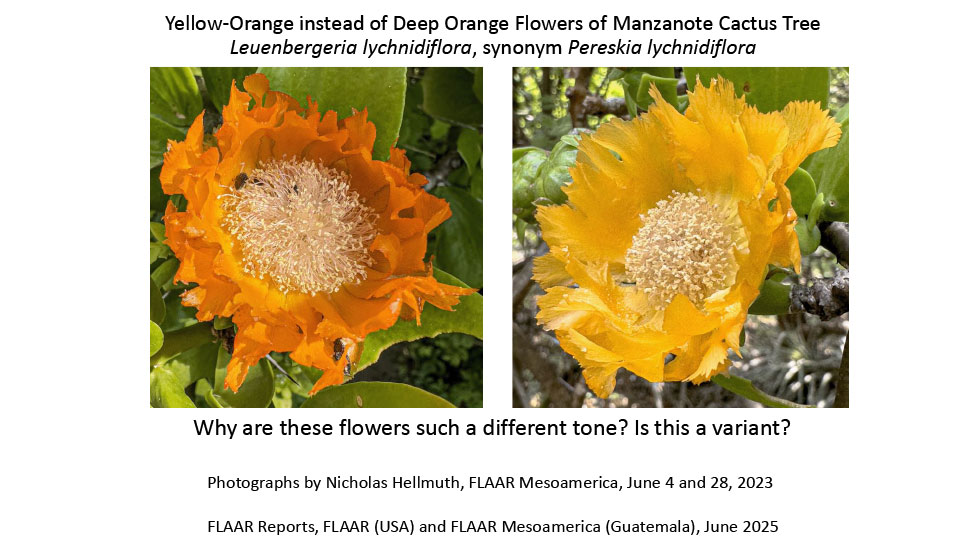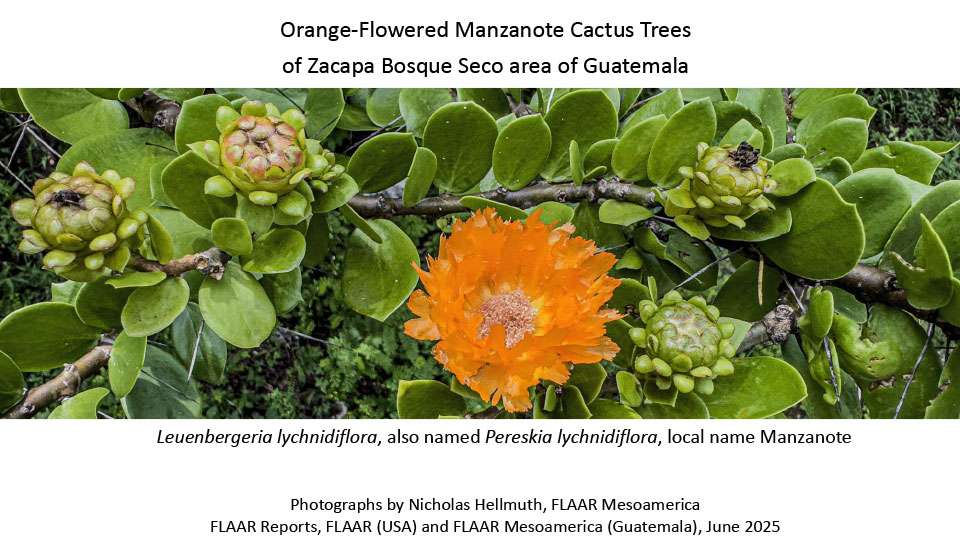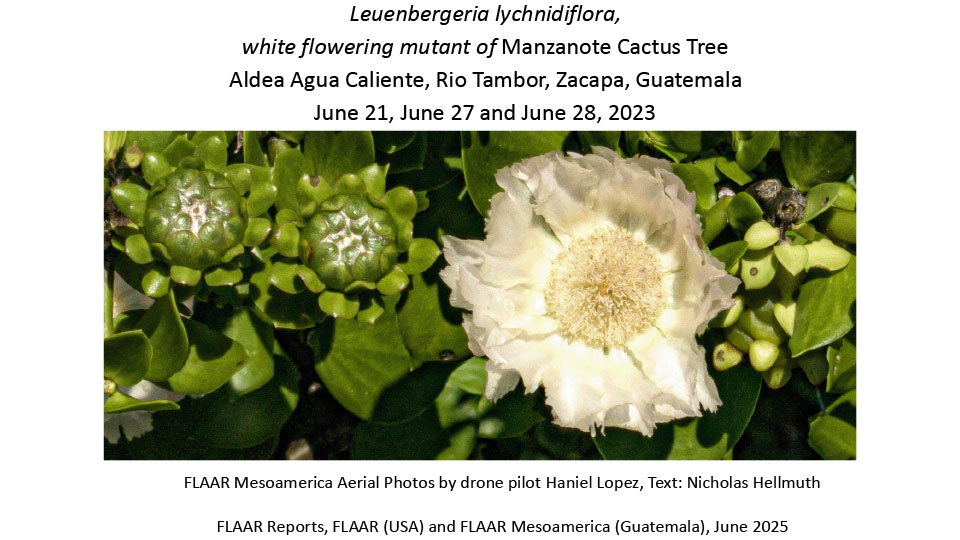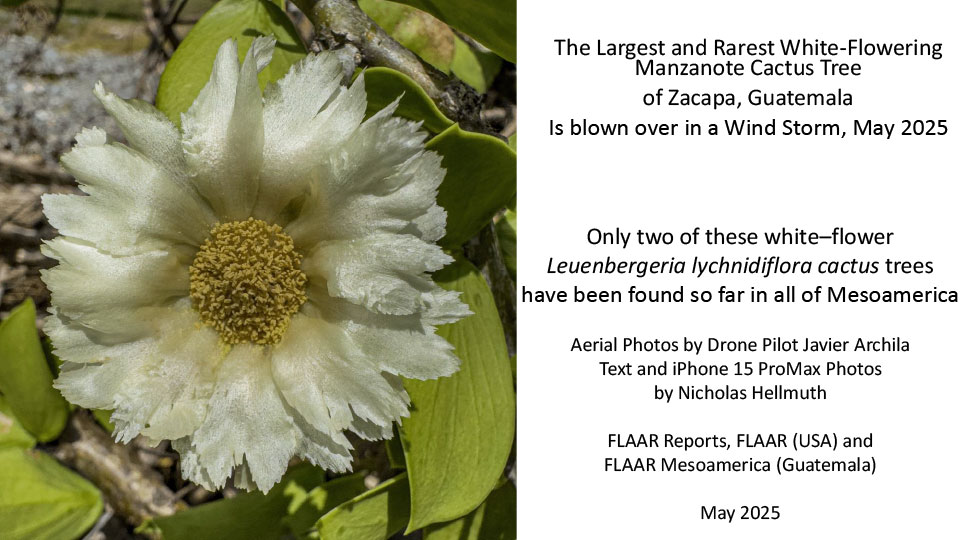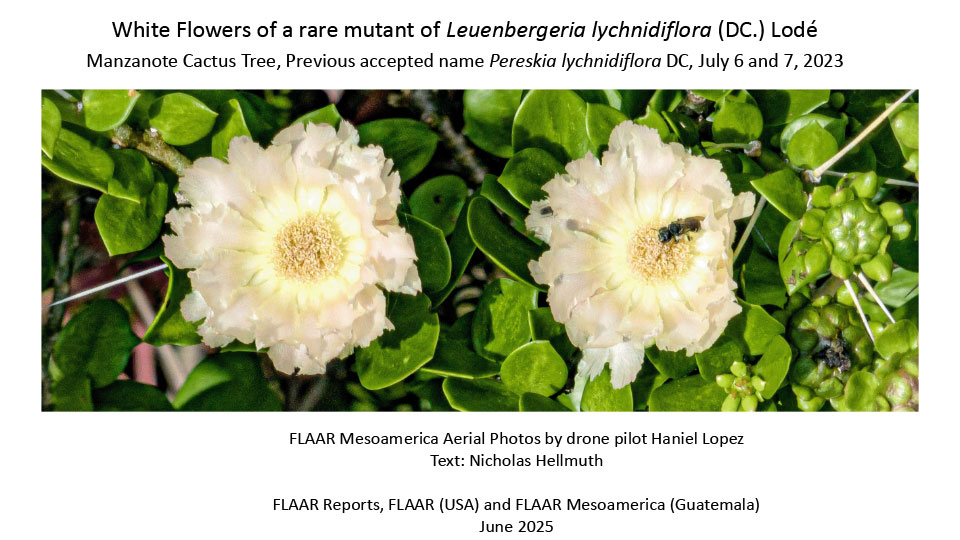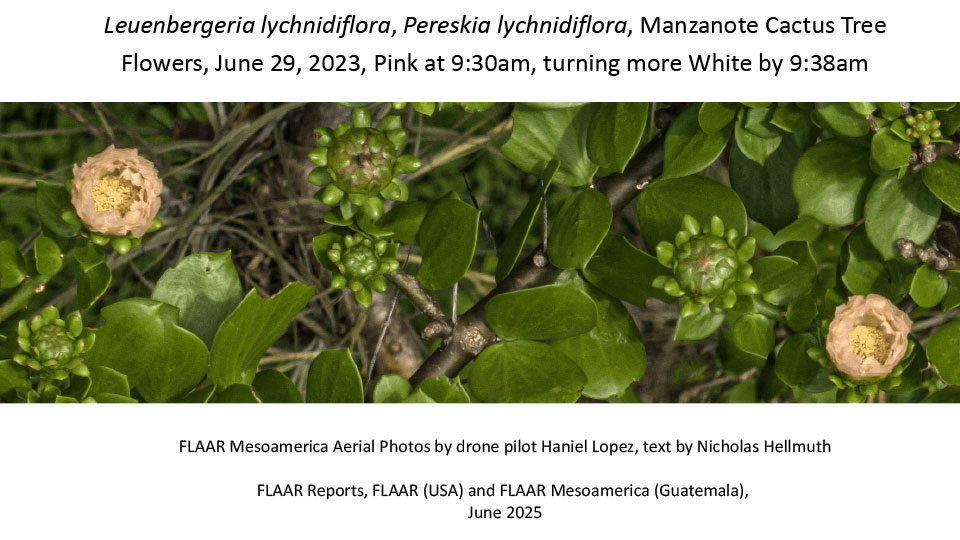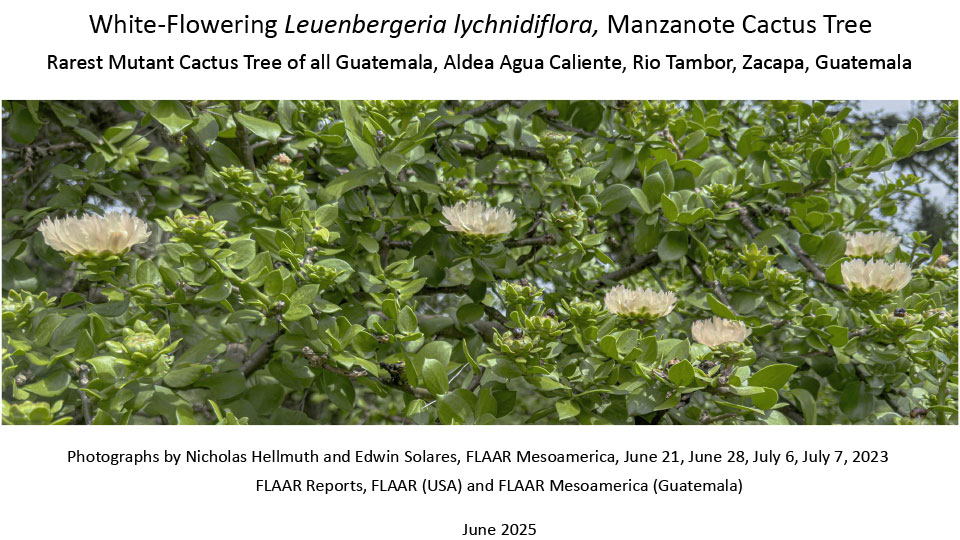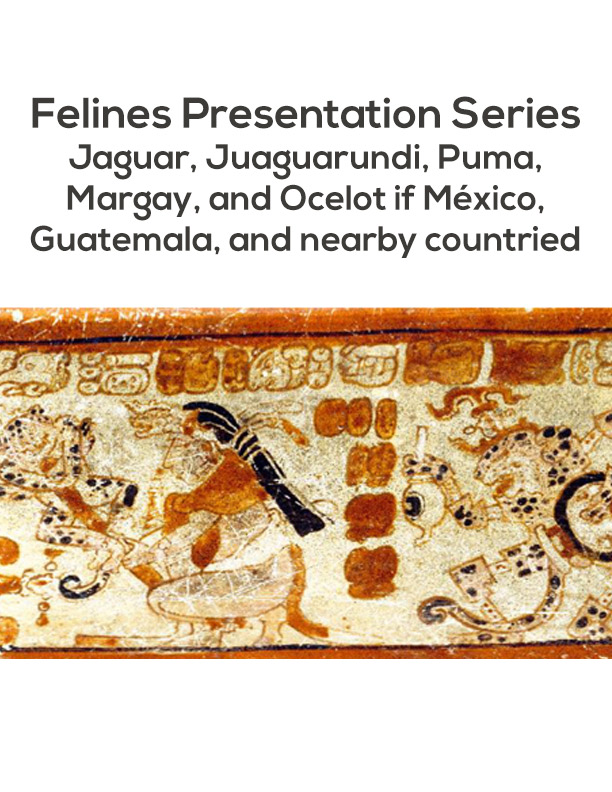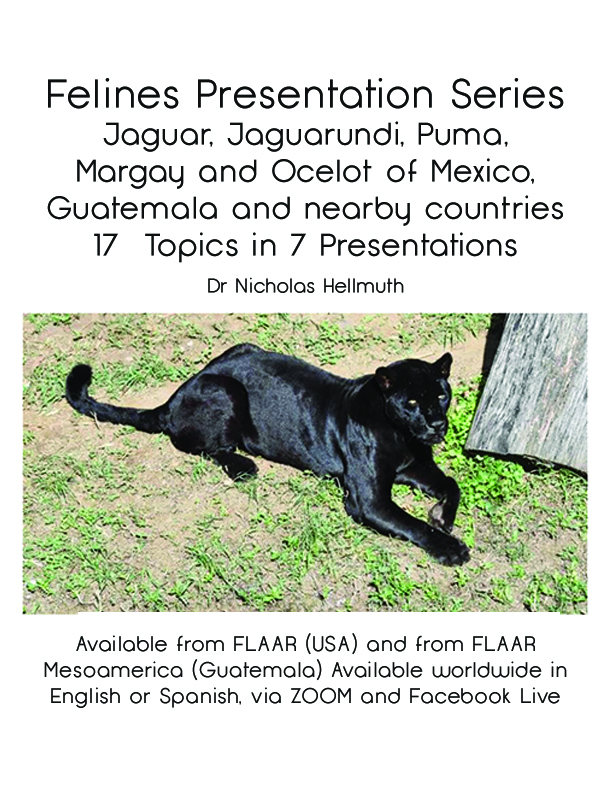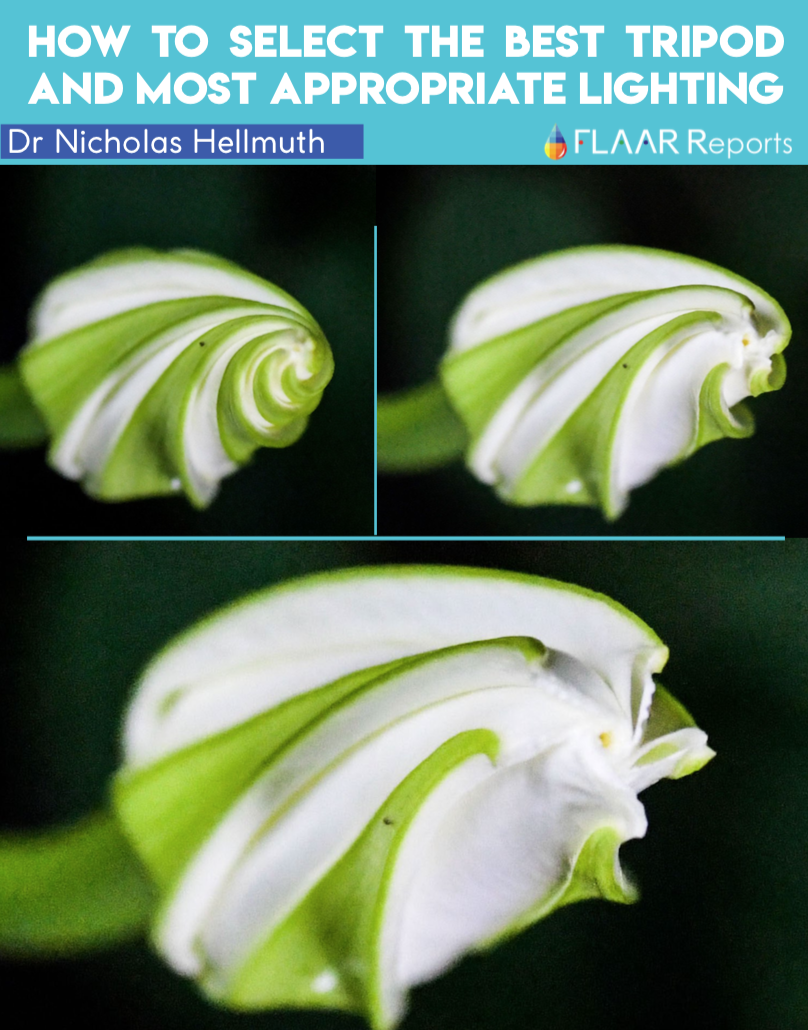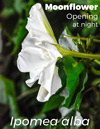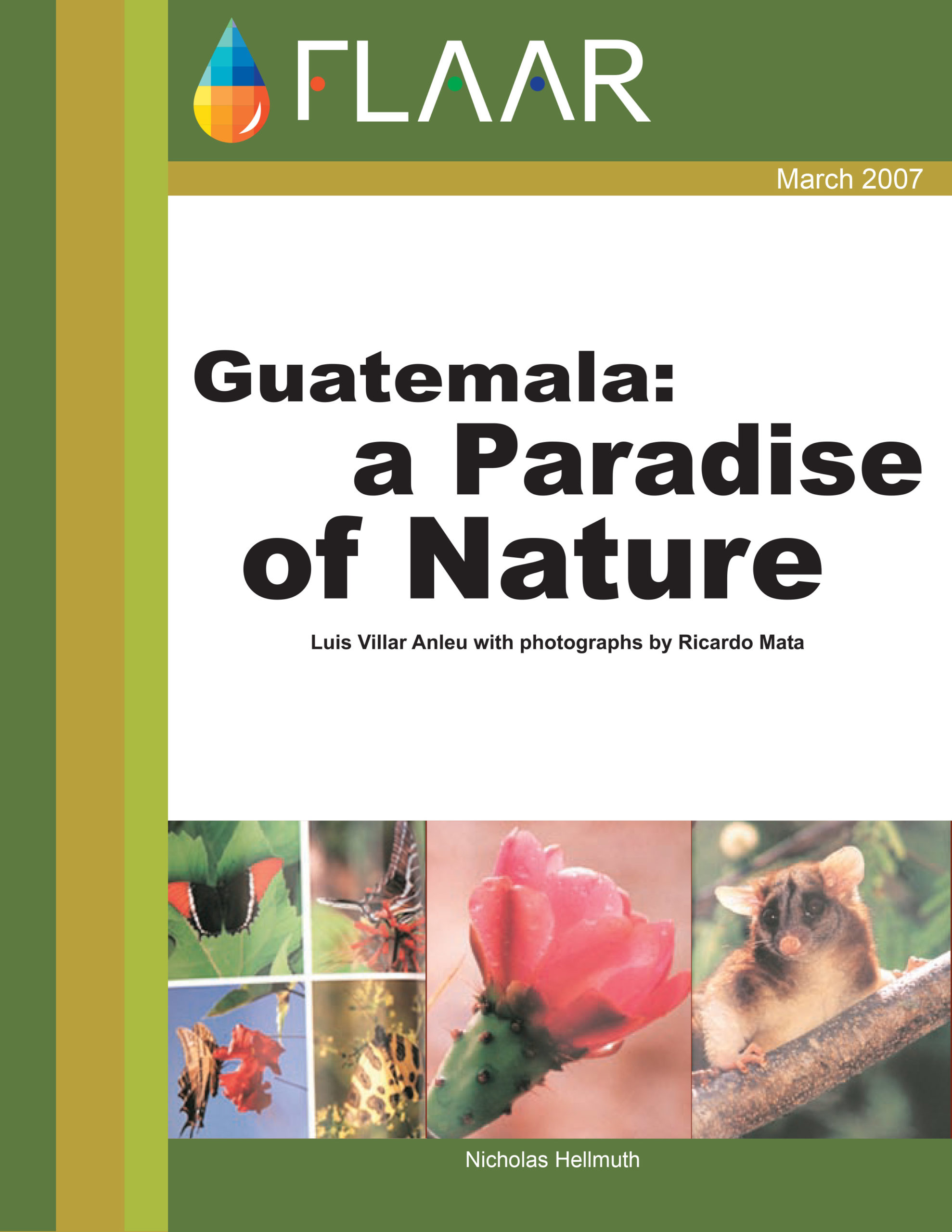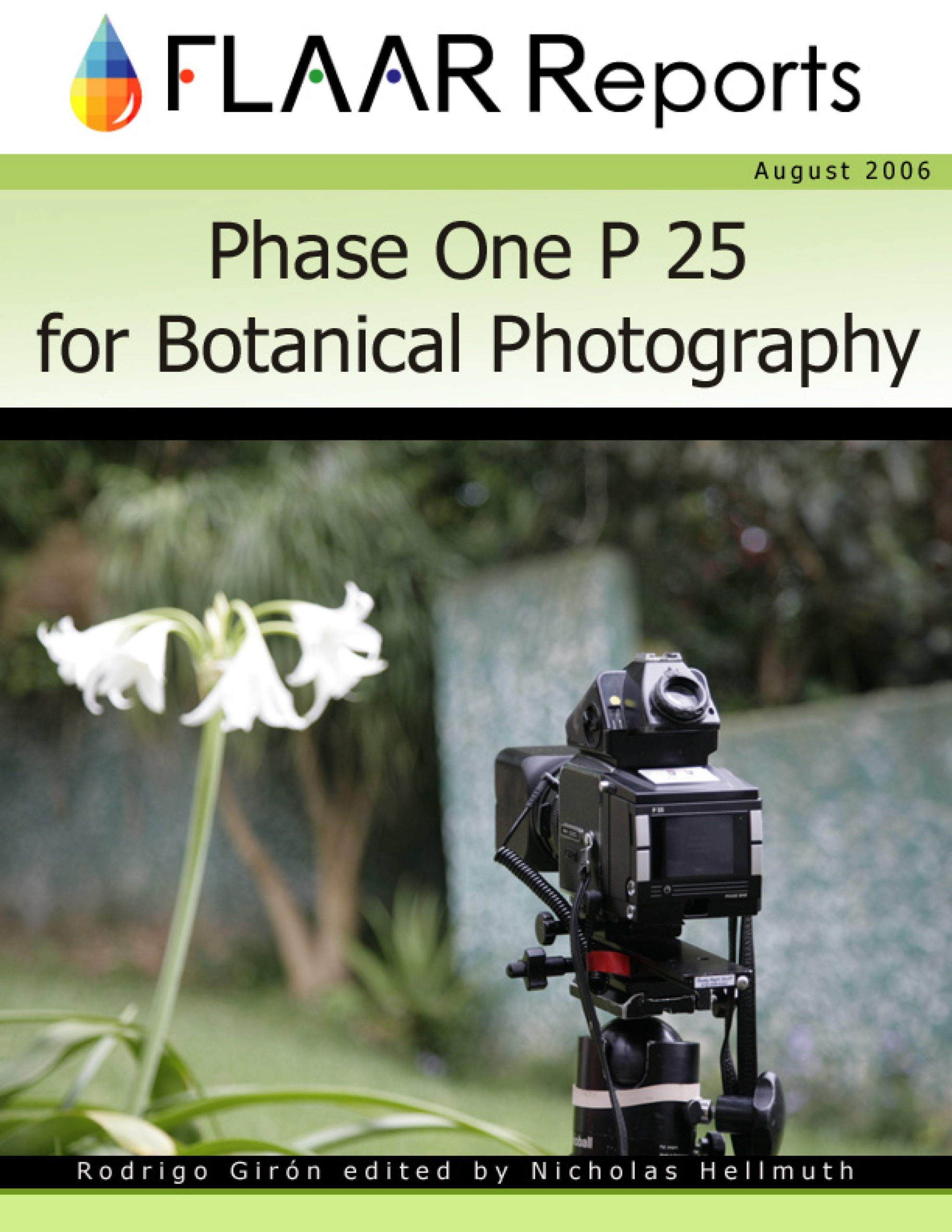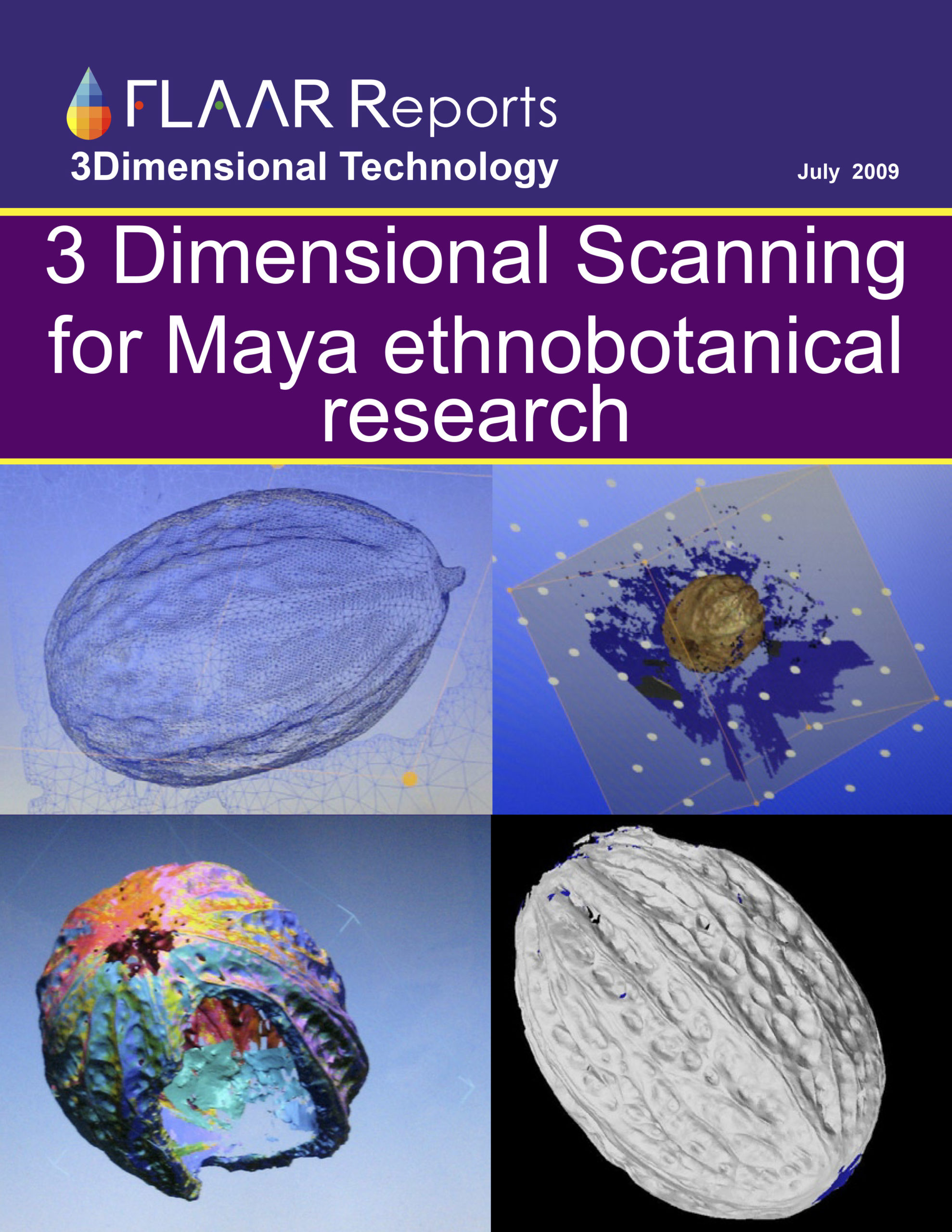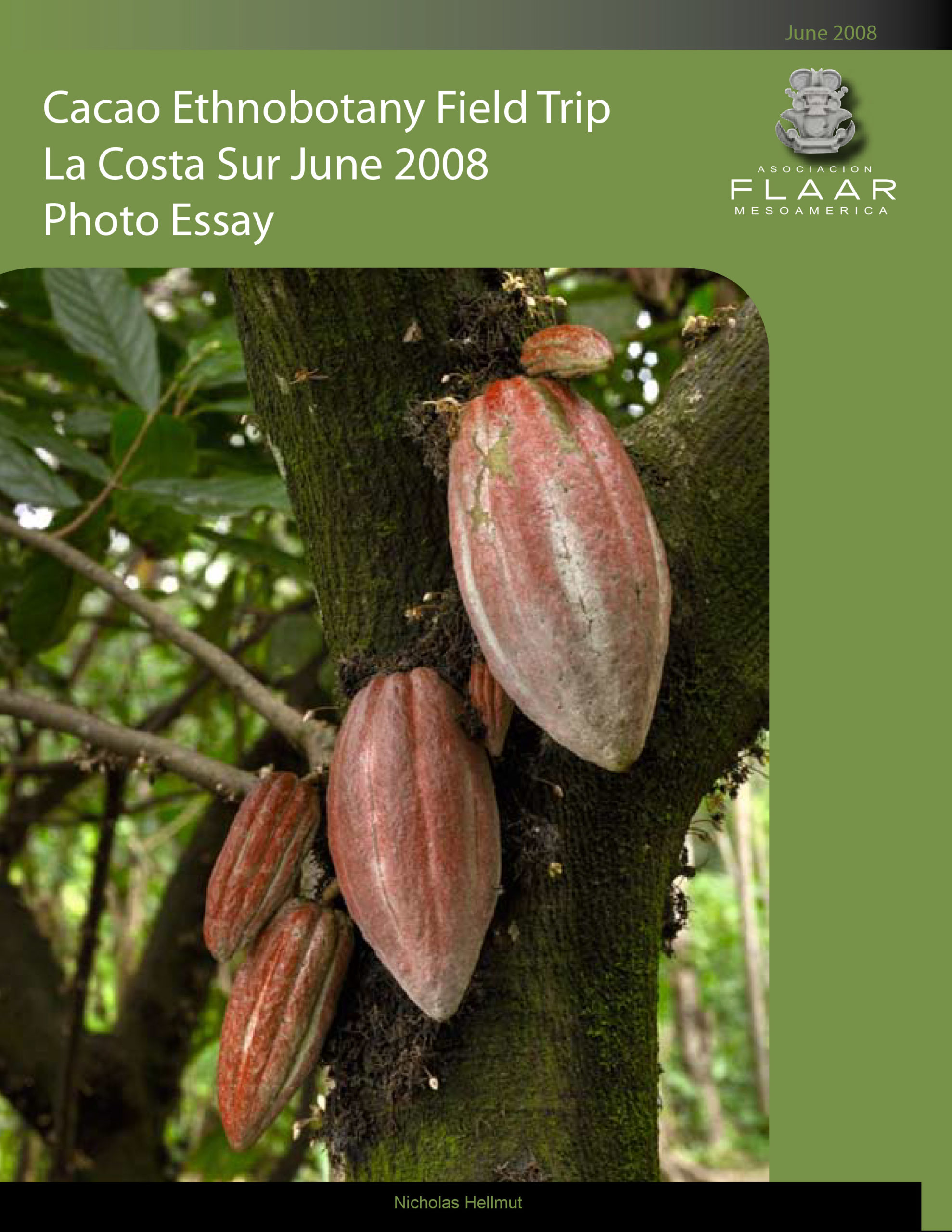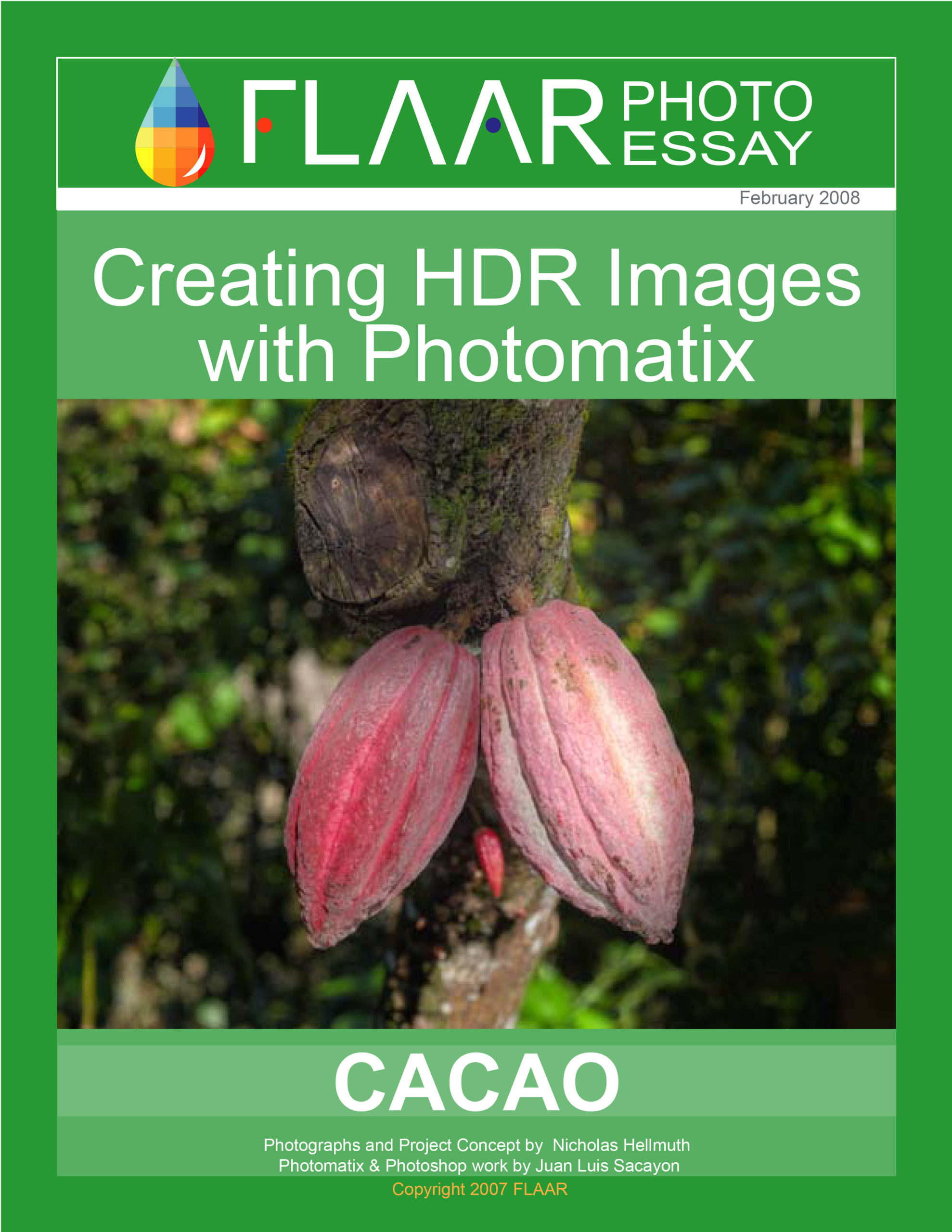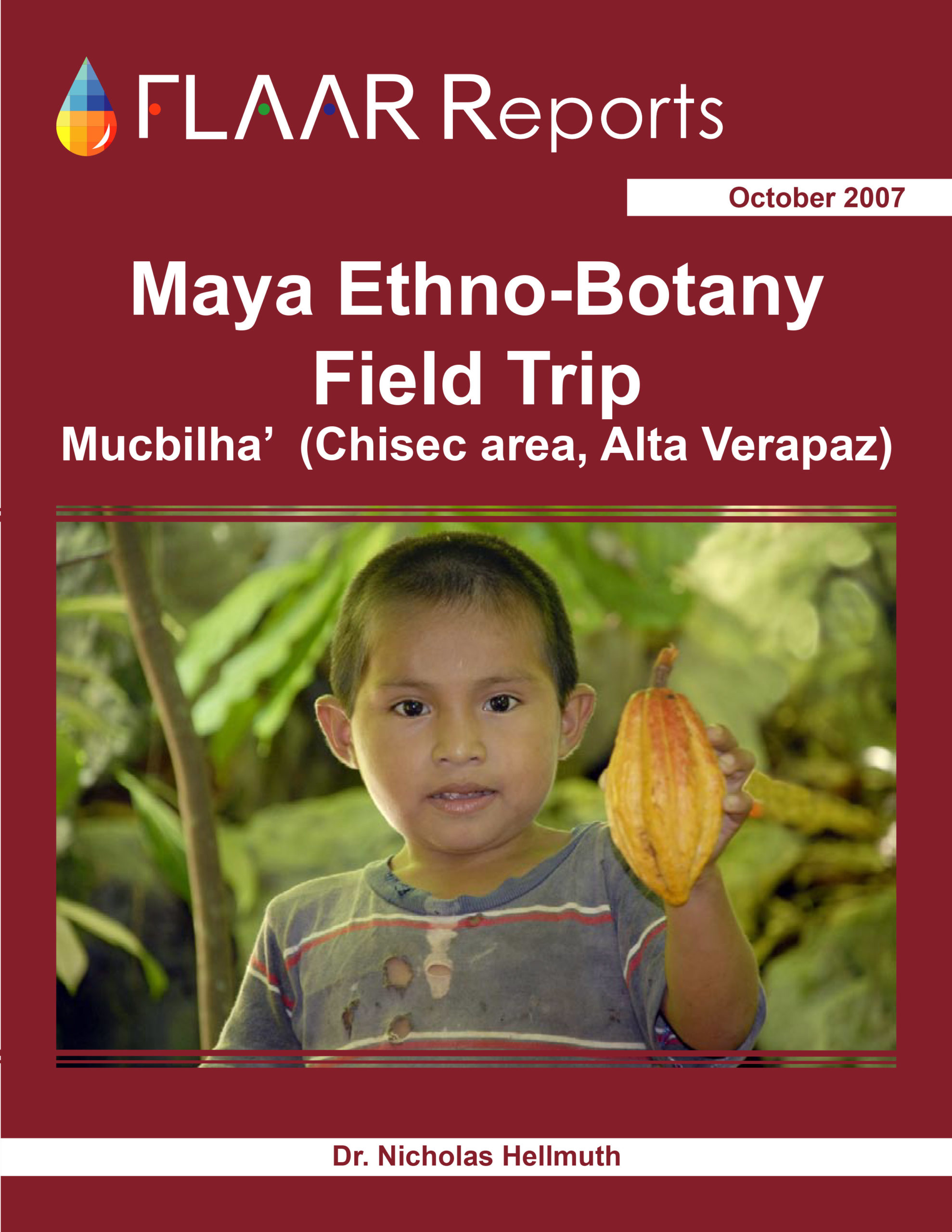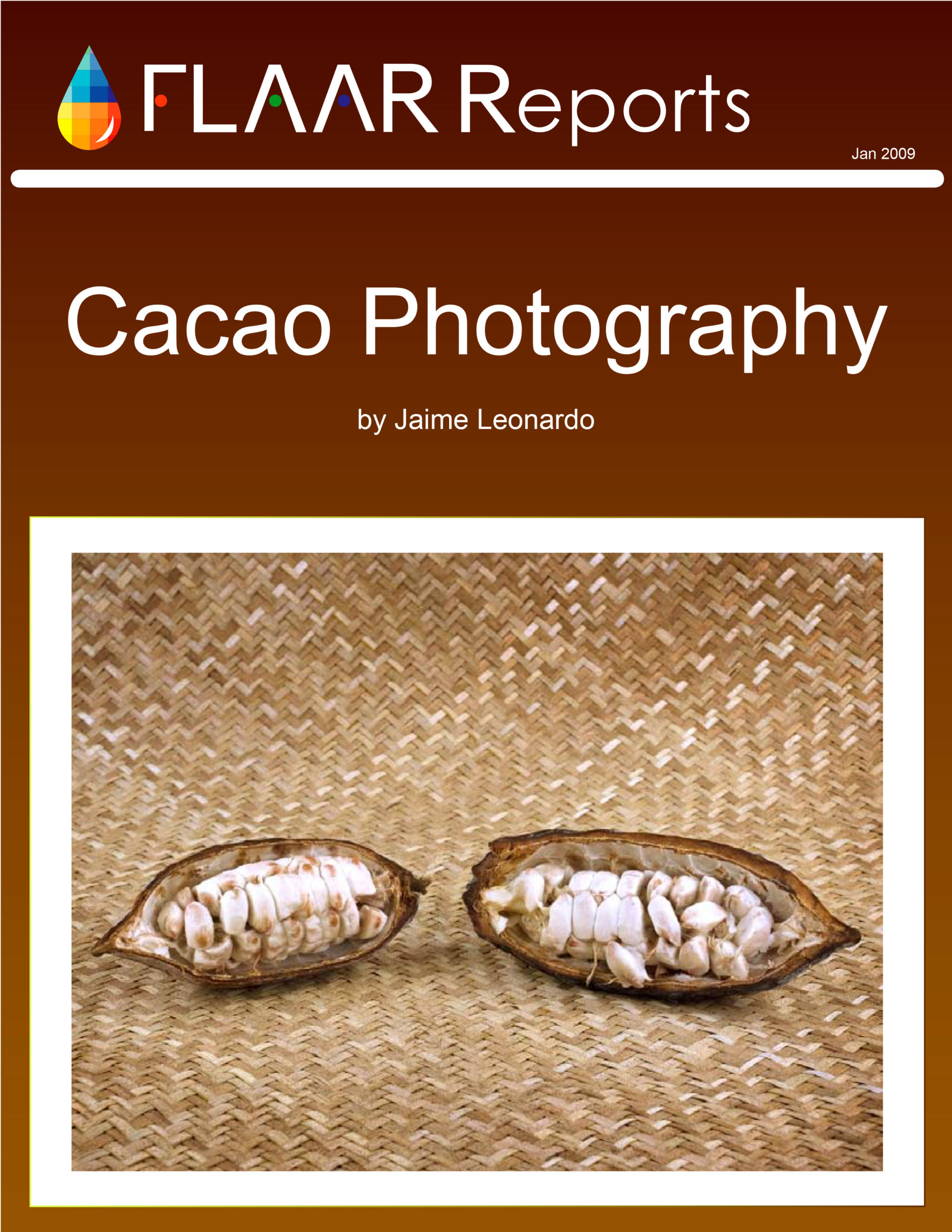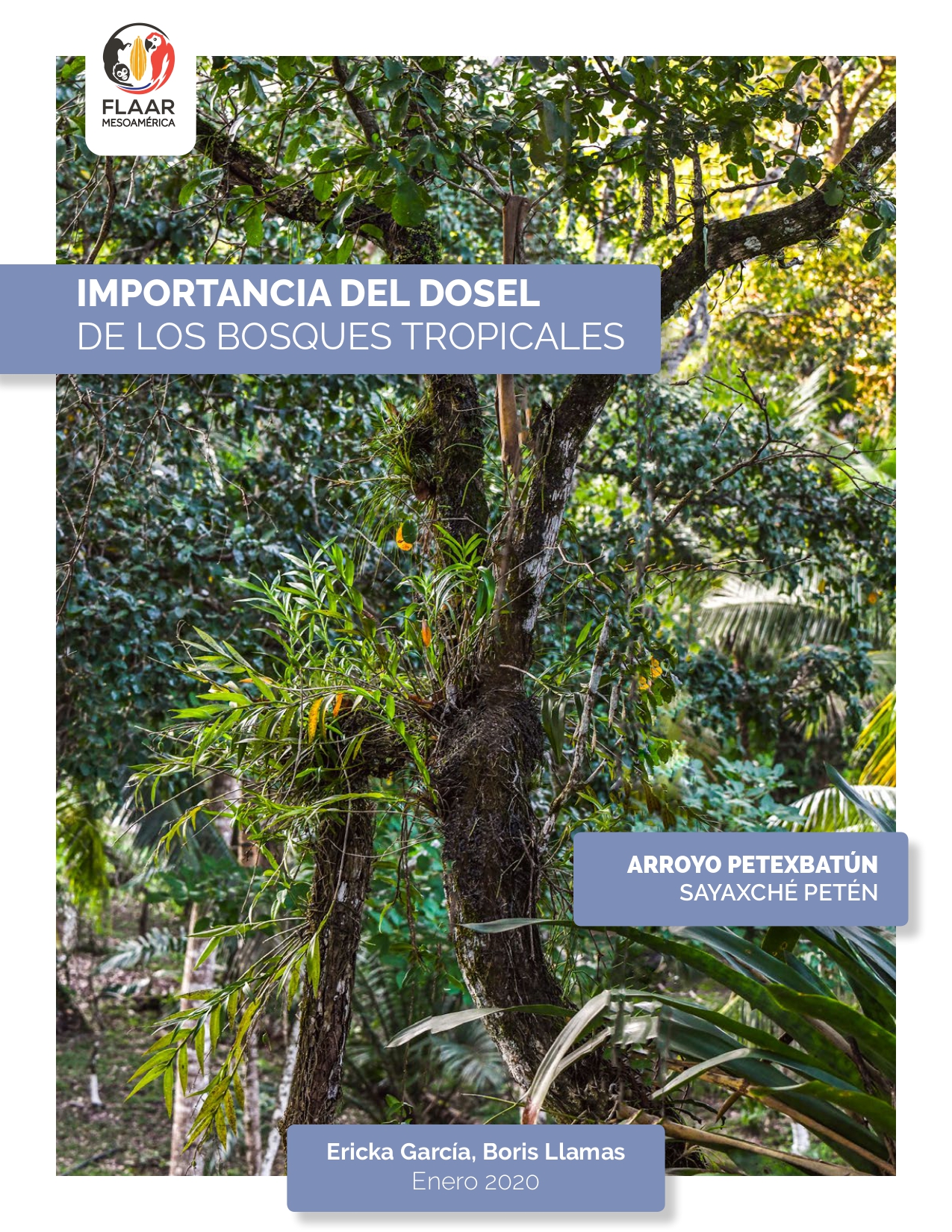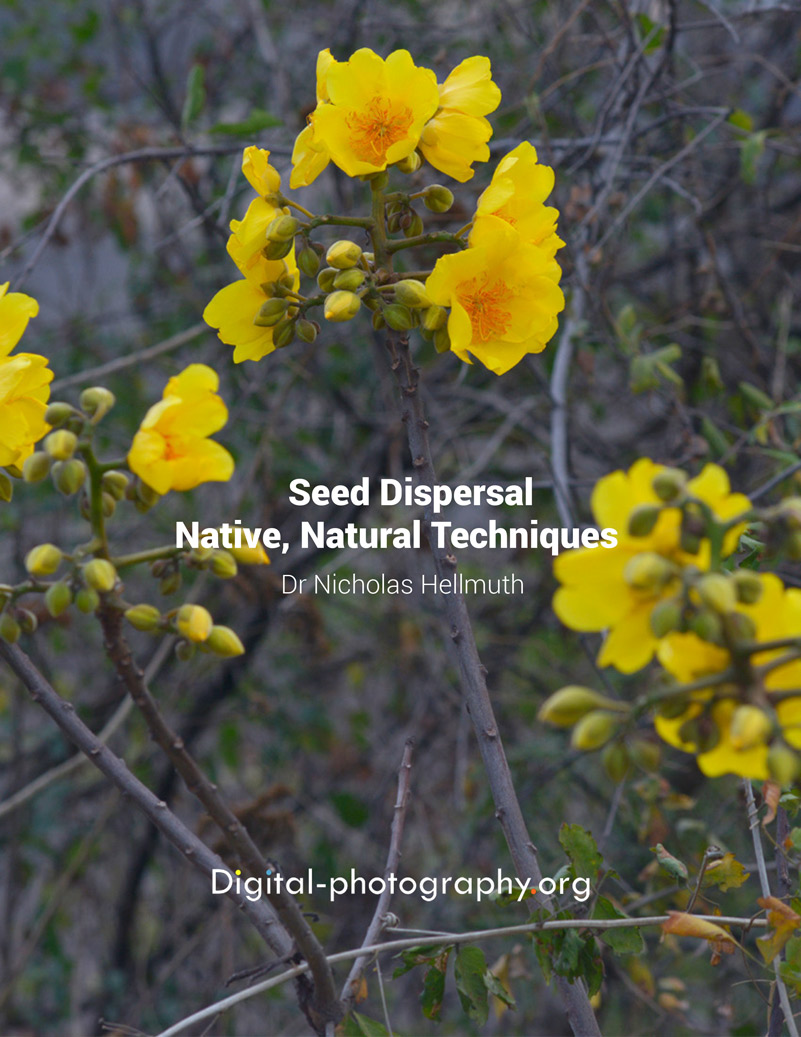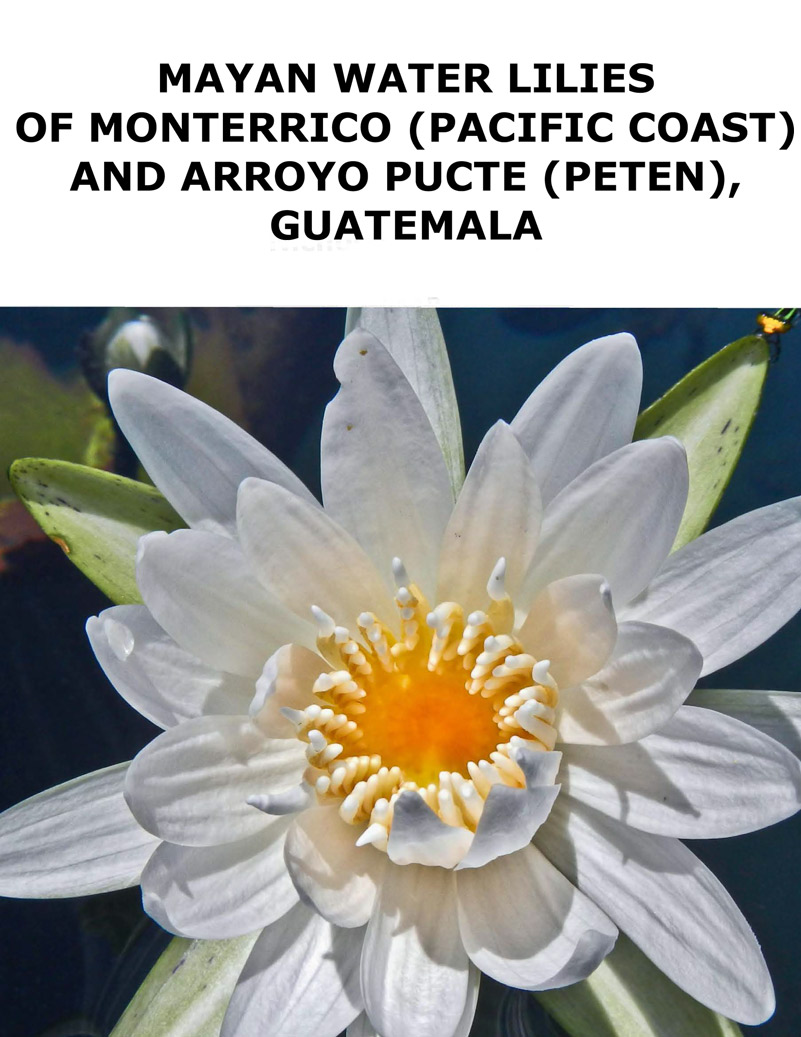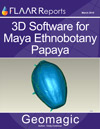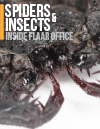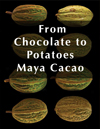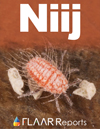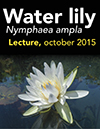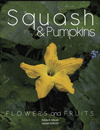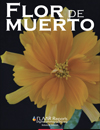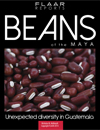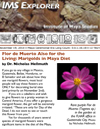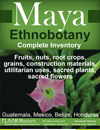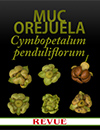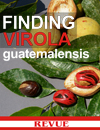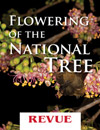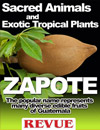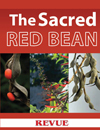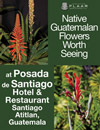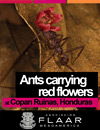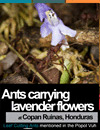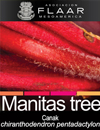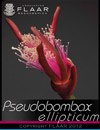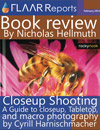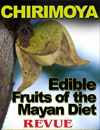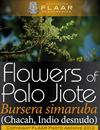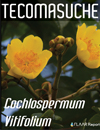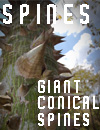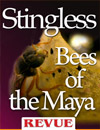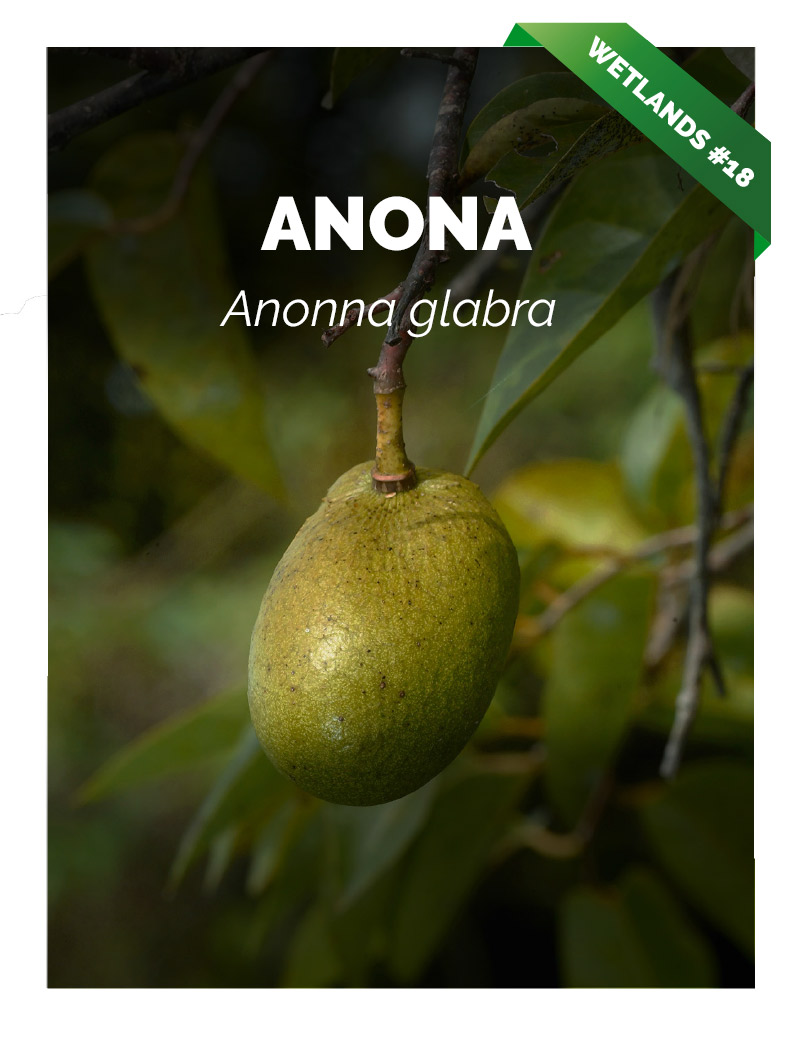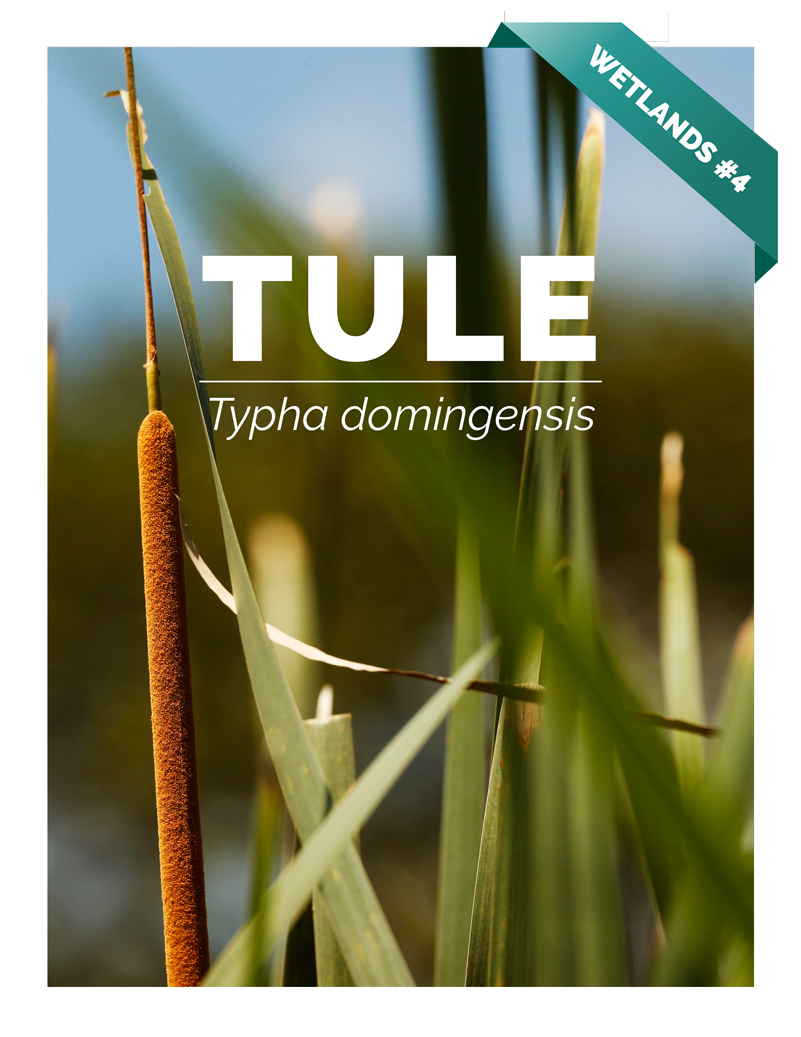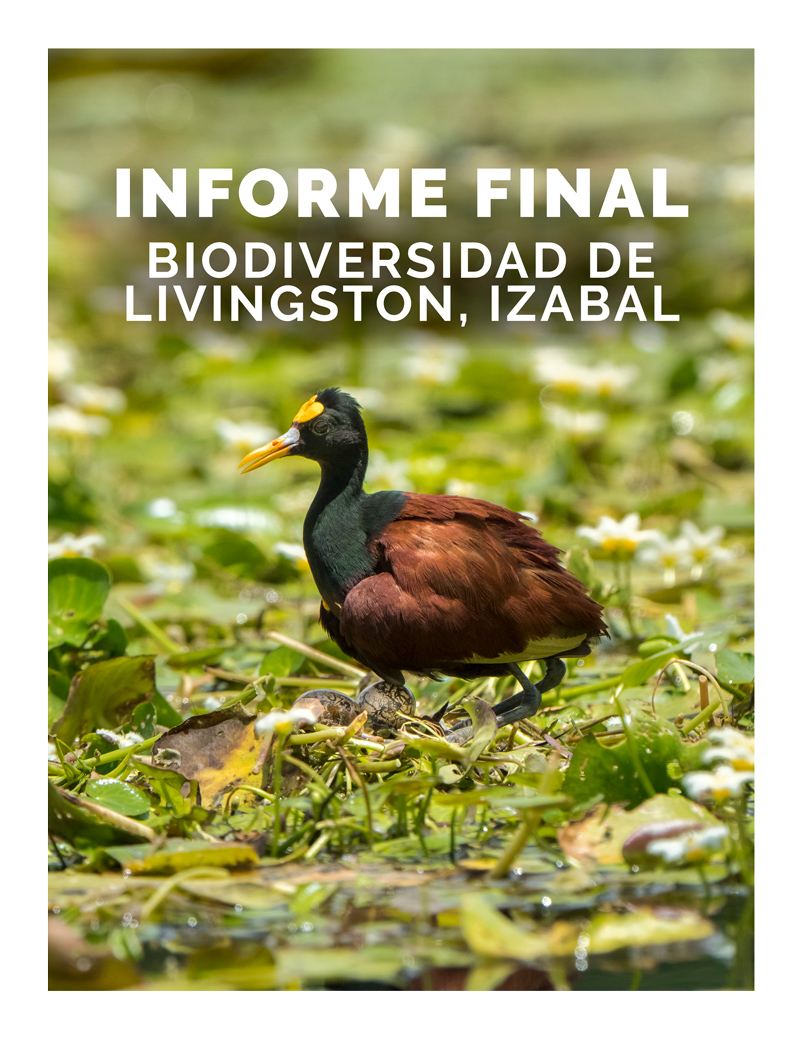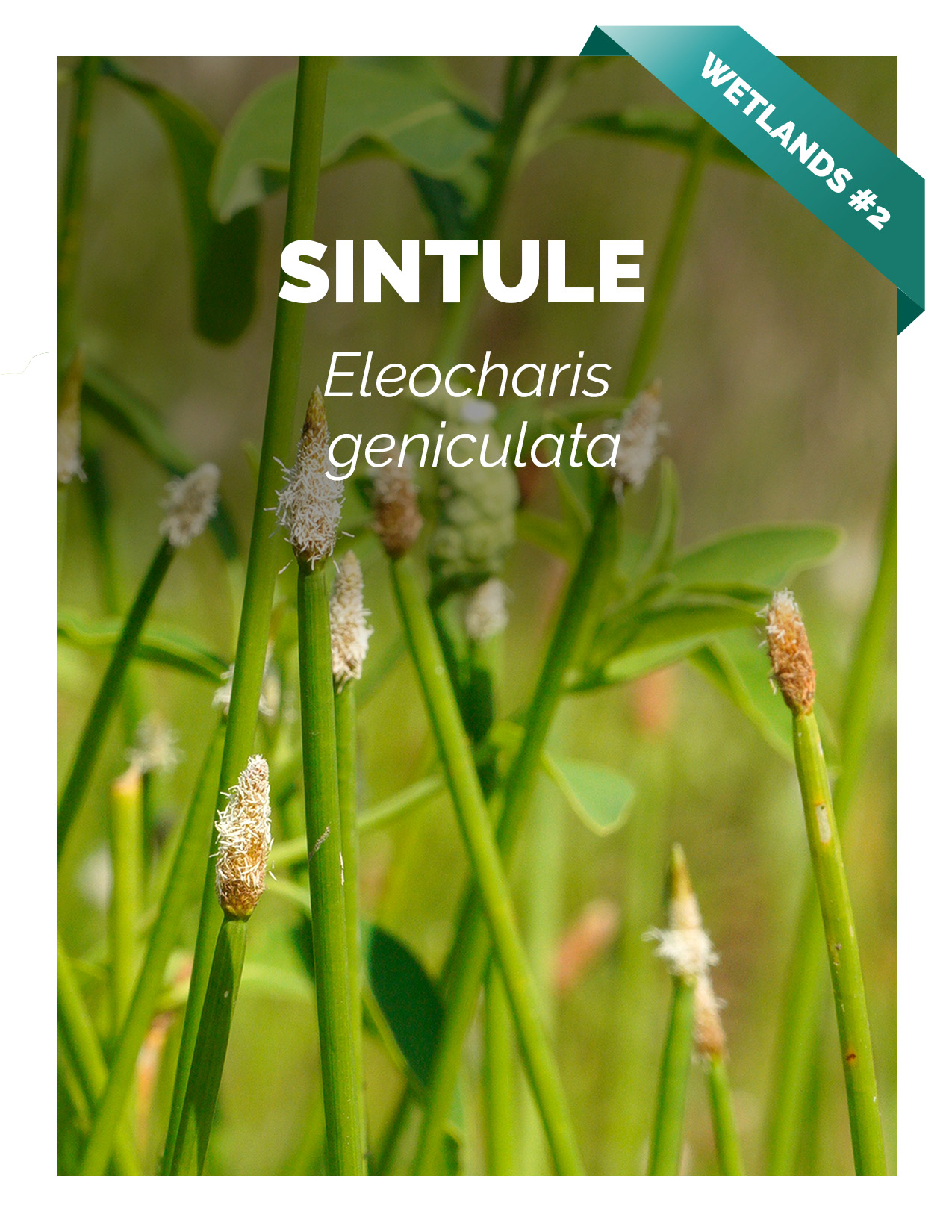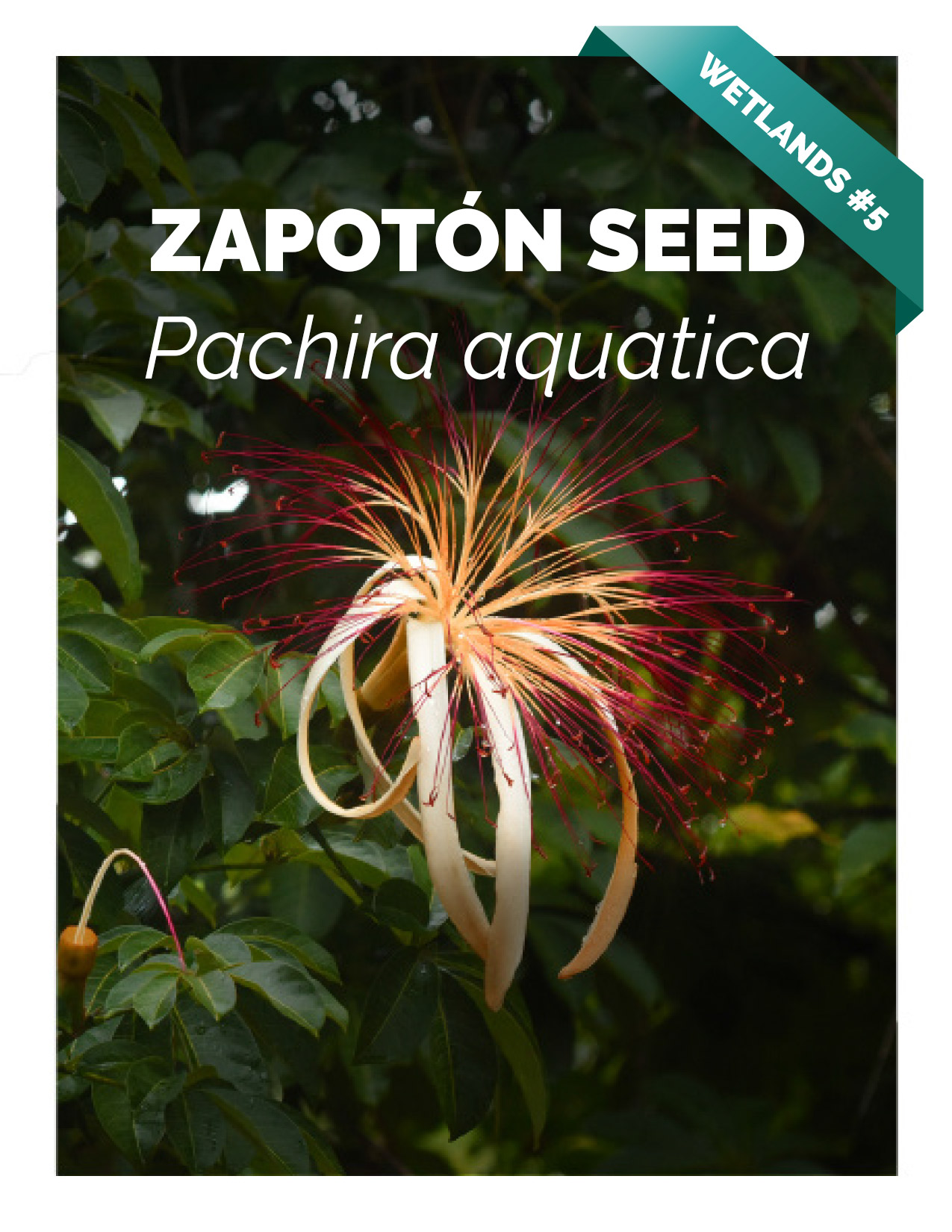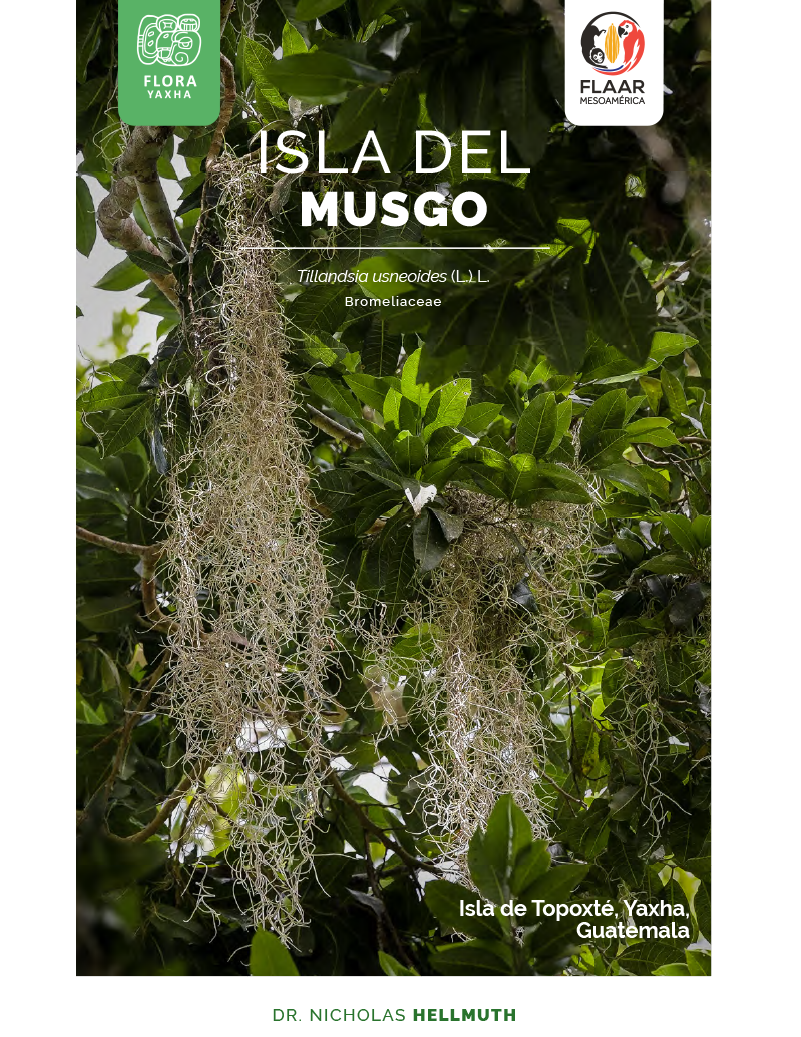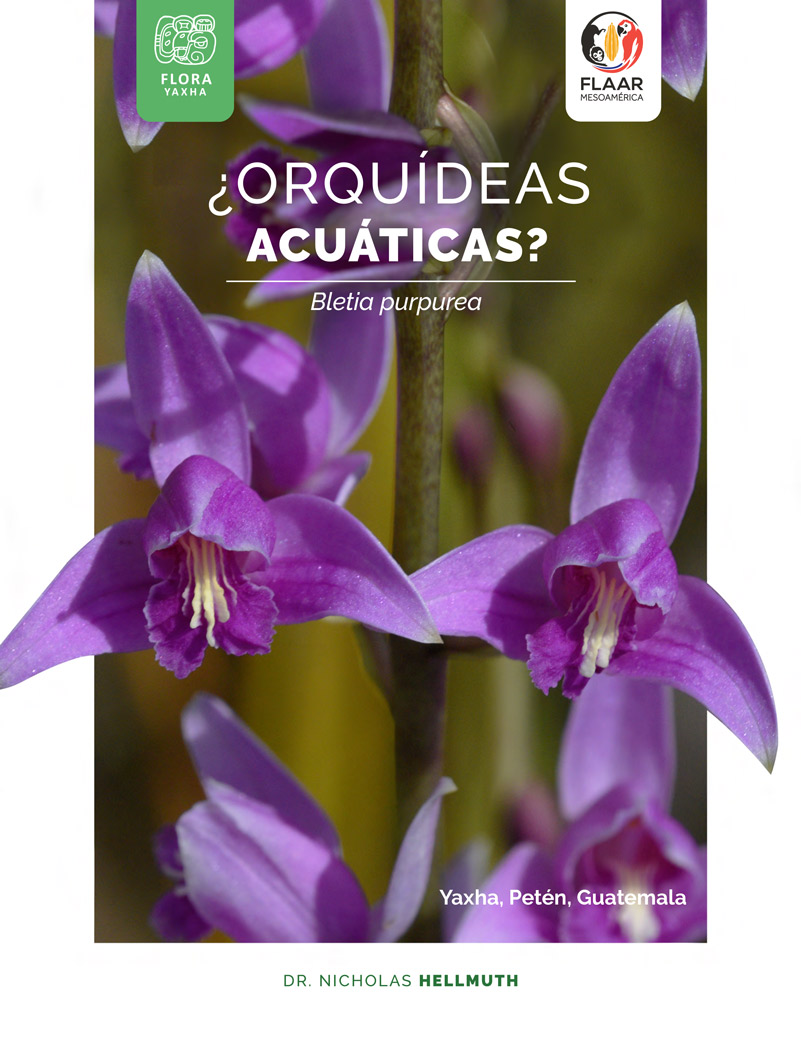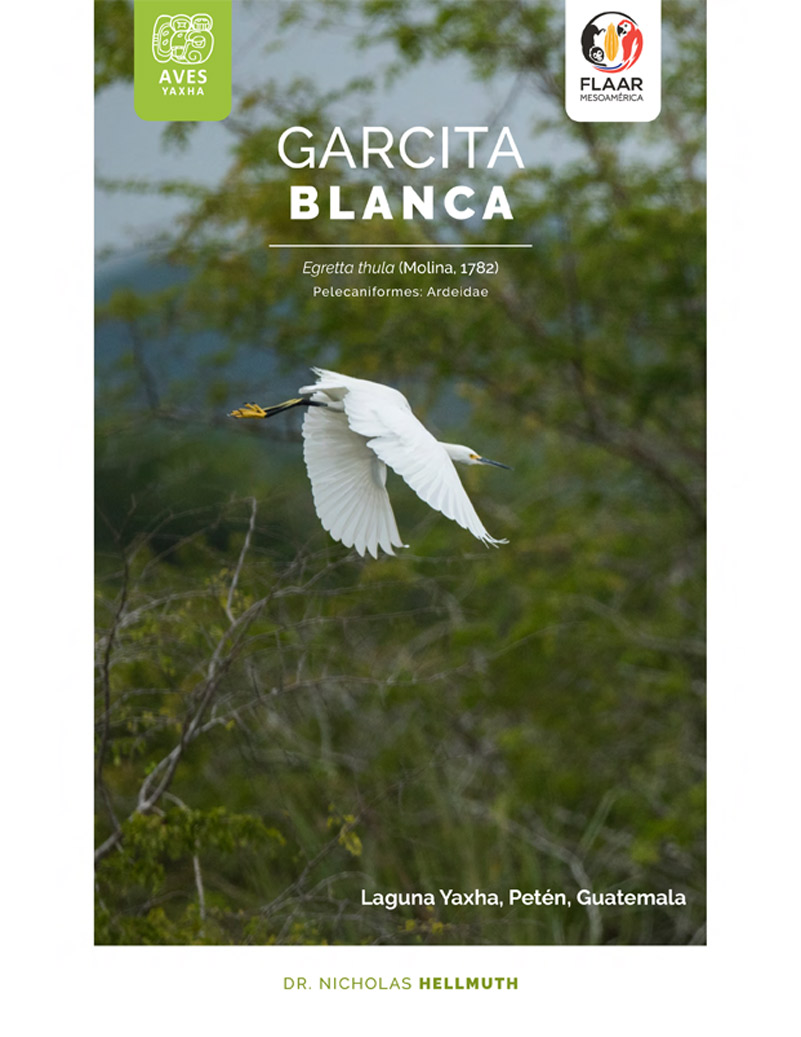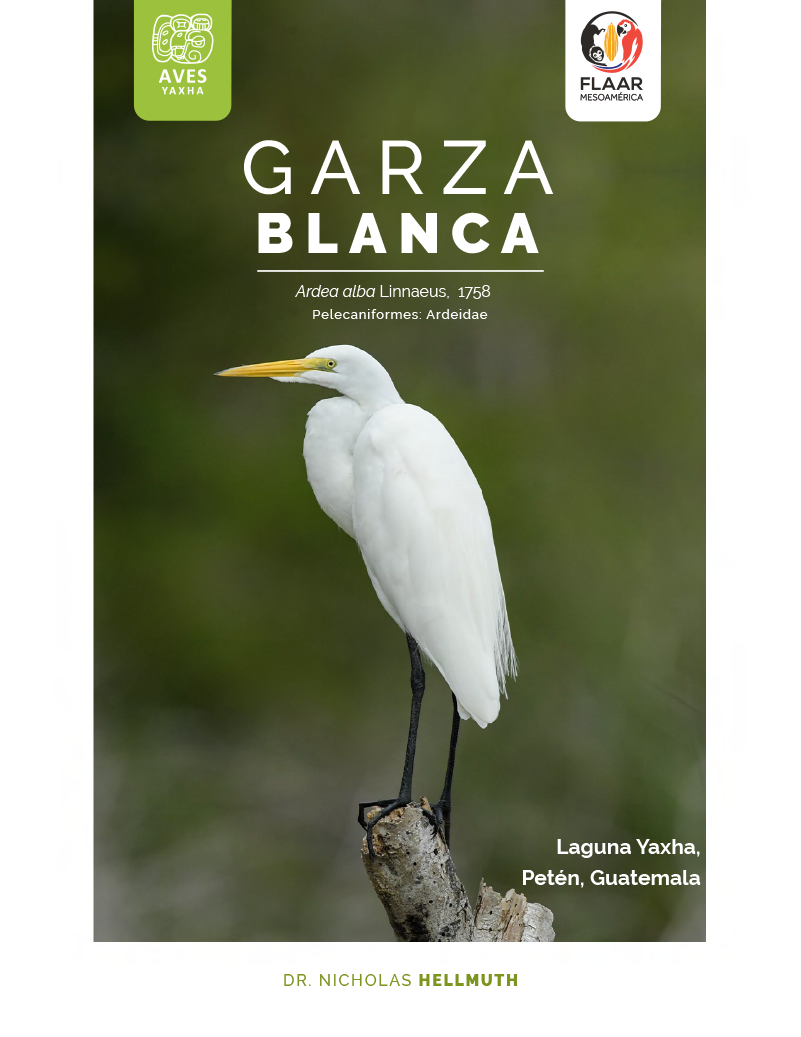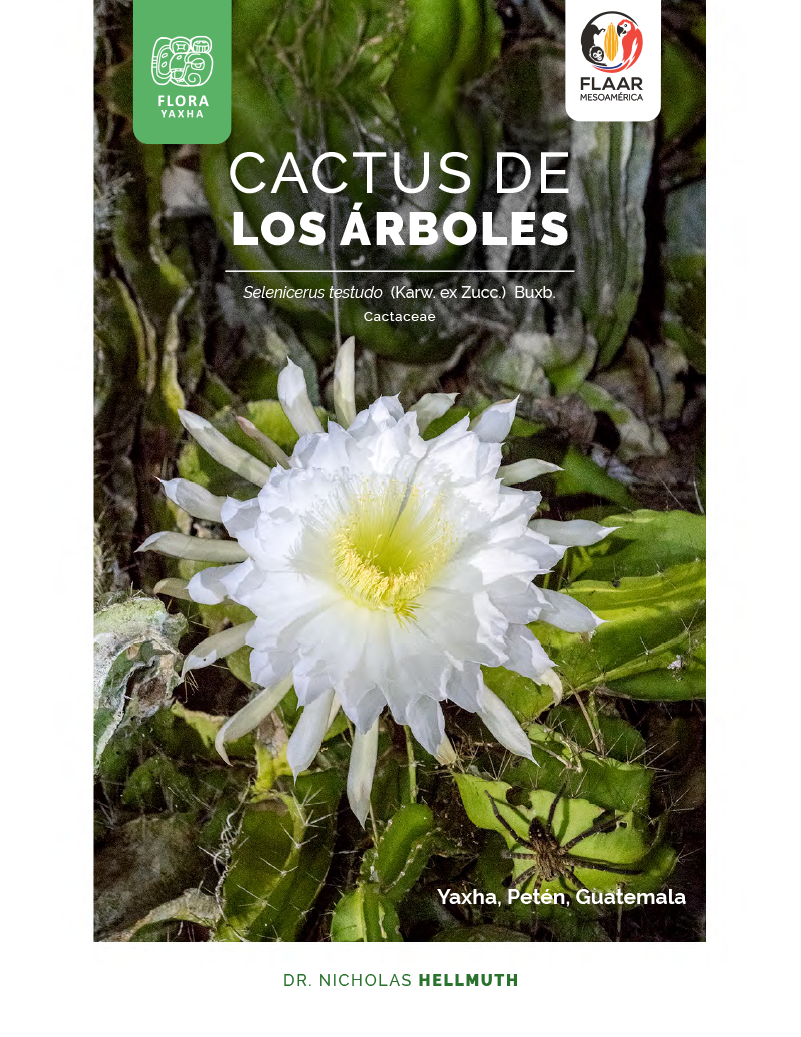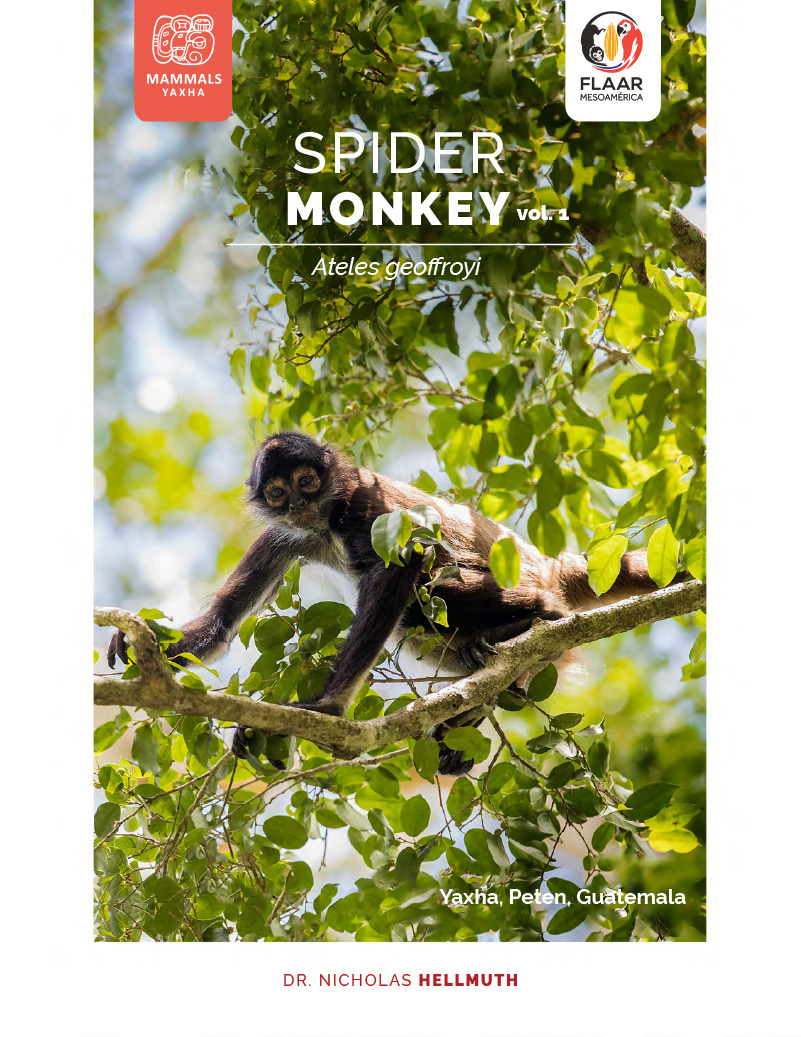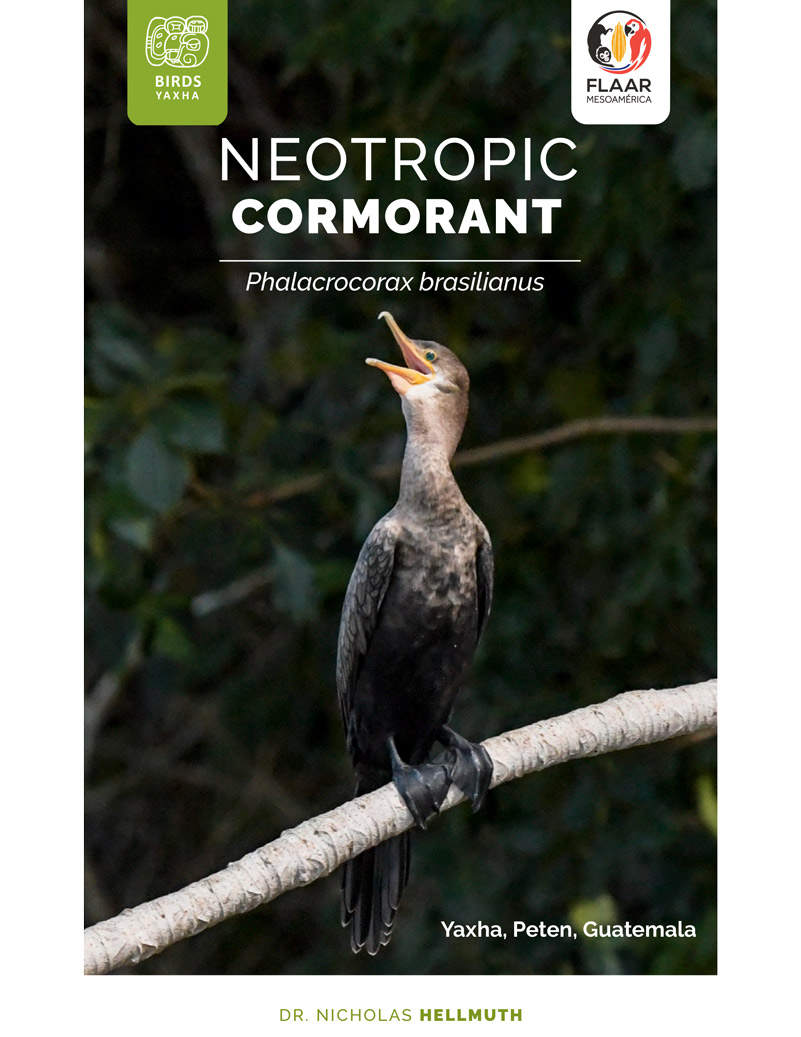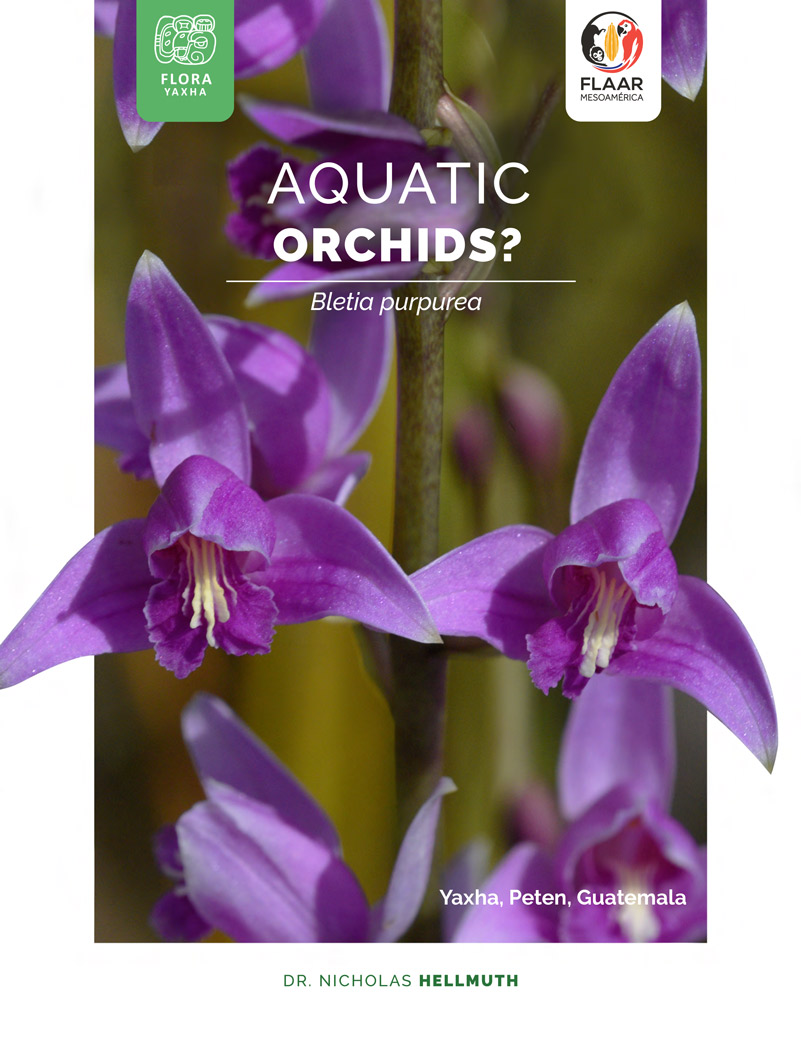Posted June 17, 2025
Written by Nicholas Hellmuth
There are hundreds of species of cactus plants in Guatemala. A few arboreal (climbing) cactus vines are in Peten. Selenicerus testudo is found in front of pyramid Temple 216 at Yaxha. But most cacti in Guatemala are in the rain shadow of the Sierra de las Minas (to the south, in El Progreso, Zacapa, Chiquimula). Plus there are cacti in other seasonally dry forests of Guatemala.
Several species of cacti are as high as a one-story building. Many even have a trunk and “branches”. But there is one species that is high as a two-story building and has a trunk, smooth bark, limbs, branches, twigs and leaves all over the place. This cactus tree is in most databases and web pages as Pereskia lychnidiflora DC, but other cactus botanists prefer the newer accepted name of Leuenbergeria lychnidiflora (DC.) Lodé. Its common name in Zacapa area of Guatemala is manzanote—obviously has other names in other parts of Mesoamerica.
We now have two FLAAR Reports on the common orange-flowering manzanote tree cactus, which we show below. Plus we have five FLAAR Reports on the two unique white-flowering mutants that the FLAAR team found on June 21, 2023. On the present page we make available downloads of all seven photo albums.
Yellow-Orange instead of Deep Orange Flowers of Manzanote Cactus Tree
Leuenbergeria lychnidiflora, synonym Pereskia lychnidiflora
Why are these flowers such a different tone? Is this a variant?
Orange-Flowered Manzanote Cactus Trees of Zacapa Bosque Seco area of Guatemala, Leuenbergeria lychnidiflora, also named Pereskia lychnidiflora, local name Manzanote
Leuenbergeria lychnidiflora, white flowering mutant of Manzanote Cactus Tree
Aldea Agua Caliente, Rio Tambor, Zacapa, Guatemala
June 21, June 27 and June 28, 2023
Published June 2025
The Largest and Rarest White-Flowering Manzanote Cactus Tree
of Zacapa, Guatemala
Is blown over in a Wind Storm, May 2025
Only two of these white–flower
Leuenbergeria lychnidiflora cactus trees
have been found so far in all of Mesoamerica
If you are interested in seeing and experiencing giant cactus trees--tree trunk, bark, limbs, branches, twigs, leaves—we would appreciate a tax deductible donation for obtaining the Mavic 4 Pro drone camera here in Guatemala, with Fly More Combo 512GB, $4,000 (to also have additional batteries). Contact biologist Vivian Hurtado, manager of FLAAR field trips. FLAAR (USA) can send a signed tax deduction donation receipt to you. This email address is being protected from spambots. You need JavaScript enabled to view it..
Leuenbergeria lychnidiflora, white flowering mutant of Manzanote Cactus Tree Aldea Agua Caliente, Rio Tambor, Zacapa, Guatemala
June 21, June 27 and June 28, 2023
Published June 2025
Leuenbergeria lychnidiflora, Pereskia lychnidiflora, Manzanote Cactus Tree
Flowers, June 29, 2023, Pink at 9:30am, turning more White by 9:38am
White-Flowering Leuenbergeria lychnidiflora, Manzanote Cactus Tree
Rarest Mutant Cactus Tree of all Guatemala,
Aldea Agua Caliente, Rio Tambor, Zacapa, Guatemala
If you want to join the FLAAR team (consisting of Dr Nicholas Hellmuth, drone pilot and photographer and two assistants) if you can both cover the cost of the field trip (two vehicles and their diesel fuel, one for you (and your friends or family) plus basic hotels, and also donate to cover the cost of the Mavic 4 Pro combo aerial photography system, you might enjoy the memorable experience to be with us on a future field trip. We also will have a field trip to find wild frangipani flower-trees, Plumeria, in the karst mountains of Alta Verapaz in May 2026. For that your donation can also help us obtain the Sony 400-800mm telephoto zoom lens, with a circular polarizing filter. We need that lens in addition to the drone. A driver will be assigned so you can relax during the field trip and look out all the windows to see the amazing Neotropical world that we drive into. And we have a November 2025 field trip to study morning glory plants in both the Maya Highlands and also the desert-like cactus forests of central Guatemala. We have found two species of morning glory “vines” that are actually complete trees. You will see and experience biodiverse ecosystems you have never seen before.
Plus in early January 2026 we will explore Yaxha, in Parque Nacional Yaxha, Nakum and Naranjo, as part of our long-range Palm Paradise Peten Project.
Most field trips are about one week. The morning glory field trip may be a few days longer.
If you would like to donate and participate in your home via ZOOM, we can send you photos and videos every day (that we have Internet in remote areas).


